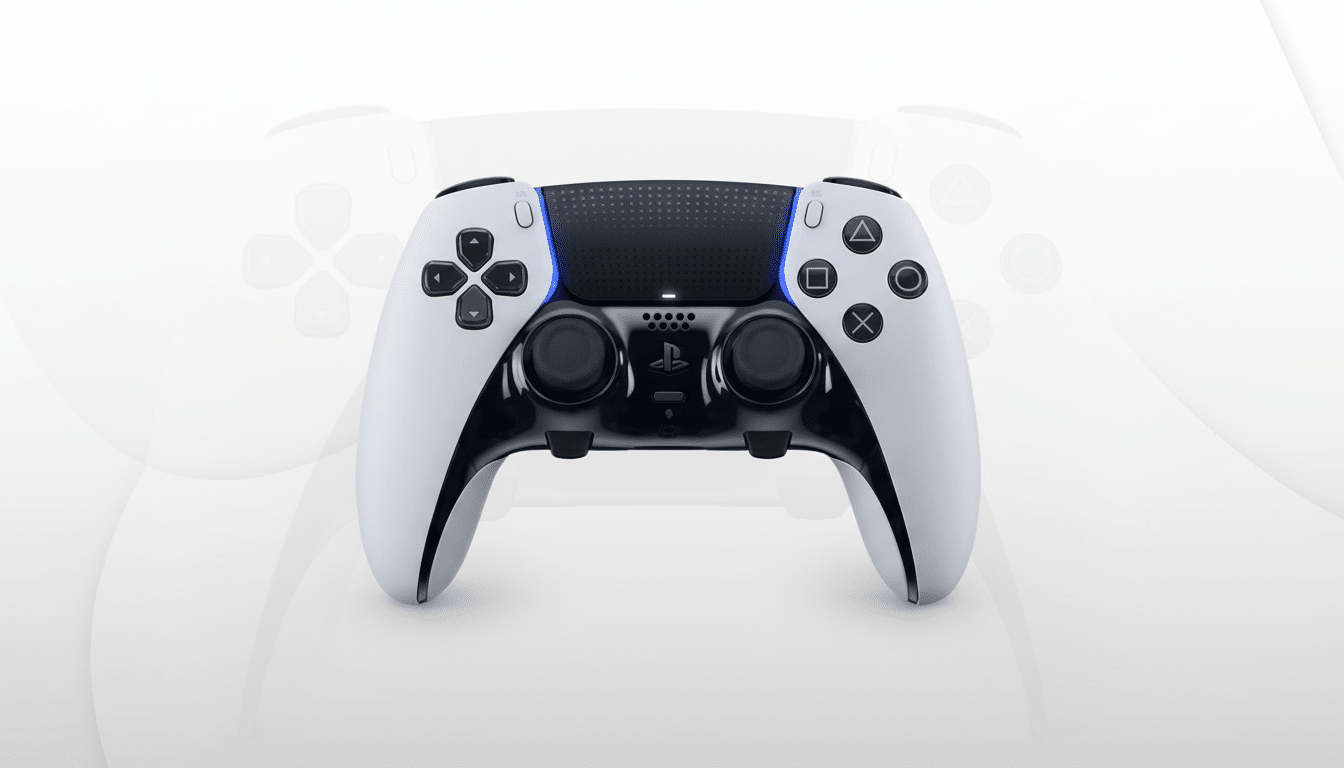Sony is doubling down on PlayStation accessories with a monitor made specifically for its console owners, and it comes with a twist you can flip (yes, we went there): a built-in charging hook for the DualSense controller that’s hidden underneath the display.
That’s the familiar pain point, or so a new concept aims to alleviate: a cluttered desk and dead gamepads, solved by slotting the screen itself into a tidy charging station.

A PS5-first approach to performance and convenience
The PlayStation-branded 27-incher focuses on QHD resolution at 2560 x 1440 — a happy medium for anyone who wants to prioritize higher frame rates over going full 4K with their PS5 or rumored PS5 Pro. It’s also HDR-compatible, and Sony says the display supports Auto HDR Tone Mapping (the console-side feature that tweaks highlights and contrast to keep pace with whatever TV you connect it to).
It has a built-in DualSense charger, which is attached; Sony refers to this as a “charging hook.” It swings down from above the lower bezel, allowing you to dock a controller just like you would on the company’s standalone charging cradle, then folds away when not in use. Both the regular DualSense and hoity-toity DualSense Edge are supported.
To make motion look smooth, the screen is compatible with variable refresh rate up to 120Hz over HDMI when connected to PS5 and PS5 Pro, matching the effort invested by so many console games into high-frame-rate performance modes. That makes it a good match for those fast-twitch standbys such as competitive shooters and sports games, where VRR can provide smoothing in dips without screen tearing.
Key specifications for gaming on console and PC
And, in addition to the console orientation, Sony is positioning the screen as a hybrid for gaming PCs and Macs. The panel can go as high as 240Hz when it’s connected to a computer, a number that’s been put aside for pro-gaming-grade monitors tuned with low input lag and fast pixel response in mind. The IPS technology ought to provide you with consistently wide viewing angles and correct color, properties which also appeal to creators and streamers.
Connectivity options include two HDMI ports (for console and set-top boxes), one DisplayPort (PC) plus two USB-A and a single USB-C option for peripherals.
That mix enables single-desk setups in which a keyboard, mouse, capture gear or webcam hangs off the monitor while PS5 and laptop coexist onscreen.

Why the charging hook matters for PlayStation players
It sounds simplistic, but including a first-party charger with your monitor is more than just freeing up an outlet. It frees up desk real estate that would otherwise have to make room for a separate dock, and simplifies cable sprawl. And because the haptics and adaptive triggers on the DualSense can drain battery life during longer sessions, it’s actually pretty nice not needing to look down at all to charge up.
Accessories are also about trust. A charger that uses the same team of people who make the controllers is generally going to more closely match Sony safety and charging profiles, which can set some players at ease when it comes to third-party docks. Not many mainstream gaming monitors venture into this level of console-specific integration, so Sony’s approach stands out even amidst a crowded field of displays.
Price and availability outlook for Sony’s PS5 monitor
Sony says the monitor will be released in the United States and Japan first, but additional markets could follow. Pricing is not yet public. If history’s any indication, it’ll wear a premium tag—so far most PS5 accessories have been vying more for the domain of auricular Muzak (PlayStation Portal earbuds) and/or the higher-end climes that might justify a design spooling off from bespoke woods.
The company also has other ecosystem pieces in the pipeline, such as its Pulse Elevate wireless speakers. While Sony has not connected the release time dots, its broader strategy is now plain: time for a desk-to-couch hardware stack where screens and audio and controllers all get along, no third-party makework required.
Important fine print and considerations for buyers
One thing to consider ahead of time: the monitor’s standout feature is based on the current DualSense design. If future PlayStation controllers adopt a new charging interface, the hook’s usefulness may erode. Even then, what you’re left with is a properly specced QHD gaming panel with 120Hz VRR for console and a bit of headroom on PC at hilariously fast 240Hz — so it remains relevant beyond the charge.
For PlayStation fans who play at a desk or toggle between console and laptop, this monitor is intended to be a sleek anchor. And it’s so much more than pixels and hertz: It’s half the cables, fewer accessories to untangle, and a controller that you’re never going to have to wonder if it’s charged or not when a game seems playable.

